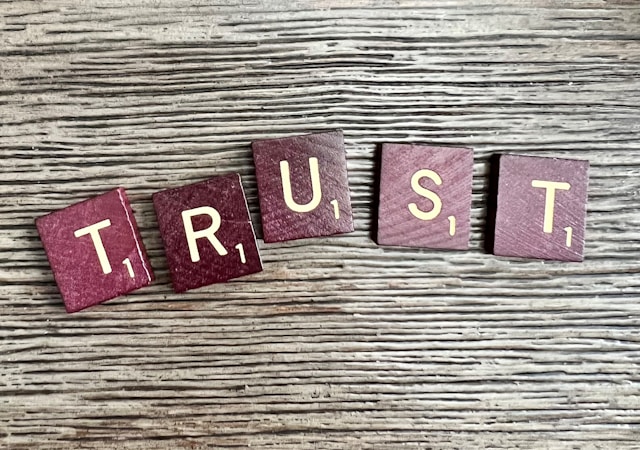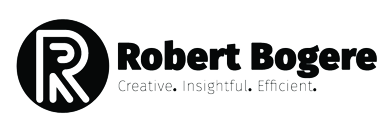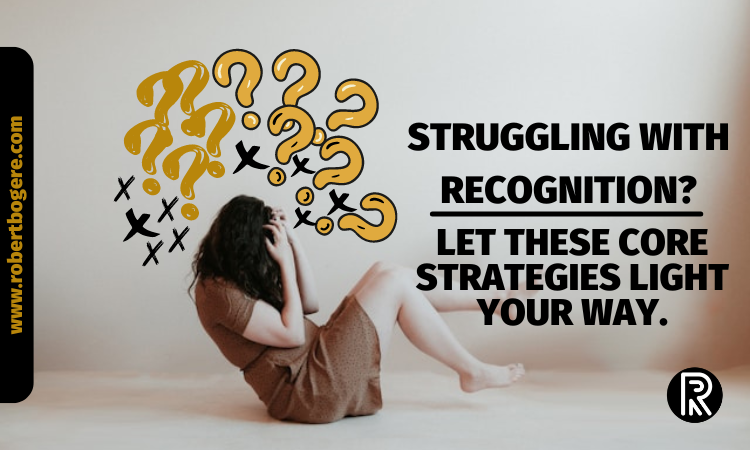Last Updated on Sat-Apr-2024 by Robert Bogere
Are you a startup overtaken by your competition, struggling to make your mark?
If your idea seems drowned in the noise and your audience isn’t connecting, fear not.
A lack of a clear brand strategy might be holding you back. As a brand strategist, I’ve seen many startups face similar challenges, struggling with the challenging task of standing out in a busy marketplace.
But here’s the thing—I’ve seen other startups overcome their obstacles and take off. It all starts with developing a compelling brand story and ensuring consistent branding across your channels.
In this article, you’ll explore actionable strategies to level up your startup recognition and forge meaningful connections with your target customers.
Let’s dive in:
What is brand recognition?
Keller defined brand recognition as the ability of consumers to identify and recall a brand based on its attributes, such as its brand name, logo, slogan, or other distinguishing features.
Investopedia says brand recognition is the ability of consumers to recognize an identifying characteristic of one company versus a competitor.

Your company has successful brand recognition when your consumers can recognize your firm through visual or auditory cues alone, even without hearing your company’s name.
Such represents the degree to which your brand is and recalled by your consumers, often tracked by metrics such as brand awareness and recall.
It enables your consumers to identify your brand among a set of others. It allows customers to recognize your brand name, logo, packaging, or other visual cues when exposed to them in various contexts, such as in-store, online, or through advertising.
6 practical strategies to level up your start-up recognition.
Gaining recognition for your start-up is key for your success. Whether you’re aiming to attract investors, customers, or talent, strategic approaches can level up your visibility and reputation.
In this section, you’ll delve into 6 practical strategies designed to level up your start-up’s recognition and propel it towards greater opportunities and growth.
Let’s dive in!
Discover: The core effective types of brand positioning strategies
1. Craft a compelling brand story
Without a clear brand narrative, it’s difficult to connect with your customers. Develop your story highlighting your;
- Values
- Mission
- Journey
If you’re a sustainable fashion brand, share a story behind your commitment to eco-friendly practices and sources.

As Seth Godin said, “People do not buy goods and services. They buy relations, stories, and magic.”
Your brand story should evoke emotion and resonate with your audience on a deeper level.
You need to take inspiration from successful brands like Apple, who have learned storytelling to gain a loyal following.
TOMS Shoes has its brand story centered on its mission of “One for One.” For every pair of shoes bought, TOMS donates a pair to a child in need.
This narrative relates to its consumers who value social responsibility and has helped TOMS Shoes build a loyal following.
2. Consistent branding across channels
Inconsistent branding confuses your target customers and dilutes your message.
You need to establish your brand identity reflecting your startup personality and values across all your touchpoints from;
- Website
- Marketing materials
- Social media profiles
If you’re promoting a minimalist lifestyle, ensure your branding reflects simplicity and sustainability in design and messaging.

Marty Neumeier, author of “The Brand Gap,” stresses the importance of consistency in branding.
He said: “A brand is a person’s gut feeling about a product, service, or organization.” Consistency builds trust and reinforces your brand identity in the minds of consumers.
Review brands like Coca-Cola, known for their unwavering consistency in messaging and visual identity across all their channels.
Starbucks maintains its consistent branding across all its touchpoints, from its iconic green brand logo to its cozy café atmosphere and friendly customer service.
Whether you visit a Starbucks store, try browsing its website, or engage with it on social media, you’ll experience the same service, reinforcing its brand identity in the minds of its customers.
Discover: The cost friendly startup growth strategies
3. Defining your target audience
Without knowing your target audience, your marketing efforts will fall flat. Identify who your Ideal customers are, their pain points, and what motivates them.
Tailor your messaging and offering relating to their needs and aspirations. If your startup is targeting busy professionals, focus on convenience and time-saving benefits in your messaging.

Simon Sinek, a renowned of the “Start With Why” philosophy, emphasizes knowing your audience’s why. He says “People don’t buy what you do; they buy why you do it.”
Know the motivations and aspirations of your target audience to customize your messaging and offerings .
Follow brands like Nike, who connect with their audience on a deeper level by tapping into their core values and beliefs.
Glossier has targeted millennials and Gen Z consumers by knowing their desire for authentic beauty products and inclusive marketing.
By featuring real customers in their advertising and fostering a sense of community on social media, Glossier has built a brand relating to its audience’s values and aspirations.
4. Establishing brand differentiation
Without a clear differentiation strategy, you risk blending into the background. Identify what sets you apart from your competitors.
Whether it’s your;
- Product features
- Distinctive brand personality
- Exceptional customer service
State what makes your startup different. If you’re entering a noisy meal kit market, to stand out you need to differentiate yourself by offering personalized meal plans based on dietary preferences and health goals.

Laura Busche, author of “Lean Branding,” advises startups to find their purple cow – something remarkable setting you apart from your competition.
He said: “In a crowded marketplace, fitting in is failing. In a busy marketplace, not standing out is the same as being invisible.”
Identify your unique selling points and communicate them to capture the attention of your customers.
Take inspiration from brands like Tesla, who disrupt traditional industries with innovative solutions and bold branding.
Dollar Shave Club disrupted the razor space by offering high-quality razors at affordable prices through a subscription model.
Their irreverent branding and humorous marketing campaigns set them apart from traditional razor brands and attracted a loyal customer base, leading to their acquisition by Unilever for $1 billion.
Discover: The critical brand mistakes startups do and kill their brands
5. Build brand trust and credibility
With unclear brand strategy, it’s challenging to build trust and credibility with your audience. Deliver on your brand promise, exceed customer expectations and seek feedback to improve your offerings.
Transparent communication and authenticity are key to earning trust. If your startup offers financial services, rank data security and privacy to reassure your customers about the safety of their data.

According to Bernadette Jiwa, author of “Difference: The One-Page Method for Reimagining Your Business and Reinventing Your Marketing,” said authenticity is the cornerstone of building brand trust.
He said: “Authenticity is about being true to who you are, even when it’s not easy.”
Transparent communication and genuine interactions foster trust and credibility with your customers.
Learn from brands like Patagonia, who rank transparency and environmental sustainability, earning the trust and loyalty of their customers.
Warby Parker has built trust with its consumers by offering high-quality, affordable eyewear and transparent pricing.
Their “Home Try-On program” allows its customers to try on glasses before buying them, allowing concerns about online shopping for prescription eyewear.
This commitment to transparency and customer satisfaction has helped Warby Parker become a trusted leader in the eyewear space. Check out Warby Parker.
6. Invest in brand awareness
Not having a brand strategy, your startup will struggle to gain visibility and recognition. Invest in targeted marketing campaigns to increase brand awareness among your target audience.
Use;
- Social media
- Content marketing
- Influencer partnerships
If your brand offers home automation, partner with lifestyle influencers to showcase how your products simplify and improve everyday living.

Gary Vaynerchuk, emphasizes the importance of using social media to build your brand awareness. He said: “Content is king, but context is god.”
Create valuable content customized to your audience preferences and when distributed well across your channels will increase your brand visibility.
Look to brands like Airbnb, who use social media storytelling to showcase different travel experiences and connect with their global community.
Airbnb leverages social media storytelling to showcase its different travel experiences and connect with its global community.
Through their user-generated content and influencer partnerships, Airbnb has built brand awareness and engagement, positioning their brand as a go-to platform for different and authentic travel experiences.
Startup brand recognition conclusion
In this era of startups vying for attention and recognition, a clear brand strategy is your last thing of hope.
From my own experience as a brand strategist, I’ve seen firsthand the transformative power of storytelling and branding.
By developing your compelling brand story rooted in your values, mission, and journey, and ensuring consistent branding across channels, you can elevate your startup recognition and forge meaningful connections with your customers.
Your brand is more than a logo—it’s the story you tell, the values you stand for, and the connections you forge with your audience.
So, take the above strategies, make them your own, and watch as your startup shines bright in your competitive marketplace.
Ready to elevate your startup brand and stand out?
Claim your spot by booking my call above. Join me for a free strategy call where you’ll learn proven steps to boost your brand recognition, engage your audience, and drive your business growth.
Limited seats available – reserve yours today and unlock the potential of your startup. Place the button above to secure your spot.




